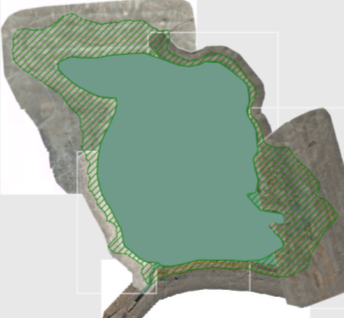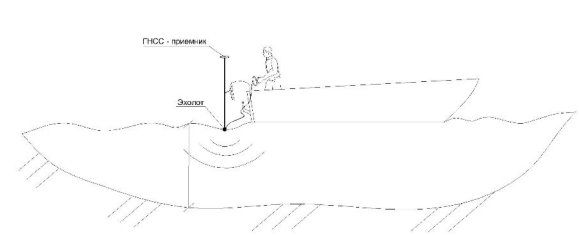The article discusses the conduct of engineering surveys at hydrographic facilities using modern technology and programs.
Keywords: engineering and hydrographic works, aerial photography, UAV, echo sounder, bathymetry.
Engineering surveys are a set of works carried out in order to obtain the information necessary to solve the main problems related to the choice of a cost-effective and technically justified place of construction, design, construction and operation of structures.
Engineering and geodetic surveys provide topographic Geodetic information and local conditions and terrain, including the bottom of the reservoir, reservoir, water body, currently functioning buildings and structures (underground and surface), other planning elements necessary for a comprehensive assessment of the natural and man-made conditions of the construction area (water body) (in digital, graphic, photographic and other forms) and the basis of construction design, operation and decommissioning of the facility, as well as the management of the area, ensure the receipt of data on the state inventory, which ensures the conduct of real estate transactions.
Engineering and Hydrographic works carried out on rivers and lakes, water areas include a complex of survey works that ensure the receipt of data on the water surface (River, reservoirs, lakes, coastal channel), terrain and depth measurements, topographic survey of the coastal part, etc [1].
Engineering and Hydrographic work was carried out along the contour of the water area of Lake Sorkol, located on the territory of the Mugalzhar District of Aktobe region. On the southwestern side of Lake sorkol lies the dry bed of the Kundyzdy River, which is filled with seasonal snow waters. Between the kundyzdy River and Lake Sorkol, there is a canal that fills the lake with water. The contours of the water area are clearly distinguished by vegetation and terrain, as well as aerial survey work was carried out using UAV «Mavic 2 Pro», assembled with a receiver from the satellite navigation system of the company «Topodrone» to accurately determine the contour. Bathymetry of the river bottom was performed using the Lowrance Hook 2–4 X Bullet echo sounder with the Leica GPS GX-1230 receiver in conjunction with the satellite navigation system.
Aerial photography — obtaining a digital model of the Earth's surface by photographing the Earth's surface from above and processing the resulting images in a program [2]. Widely used in the modern market. The main advantages are reduced labor force, the ability to quickly capture a large area in a short time and obtain high-precision information on complex objects, as well as to obtain an orthophotoplane, creating not only a digital model of the Earth's surface. The technical characteristics of the UAV used in the survey work are shown in Table 1.
Table 1
Technical characteristics of the instrument «Mavic 2 Pro»
|
Weight |
0,907 kg |
|
Length/width/height (mm) |
242/322/84 |
|
Maximum flight range |
18 km |
|
Angle of inclination |
25º |
|
Maximum flight time |
31 min (25 km/hour) |
|
Maximum flight altitude above sea level |
6000 m |
Aerial photography was carried out to accurately determine the contours of the water area and vegetation cover. In the work on the creation of the orthoplane, the Earth's surface marks determined by a preliminary instrument were used [3].
Currently, one of the main advantages of UAV flights is the ability to create a preliminary flight route with full aerial photography of the working area. The route can be built with many programs. During this work, the program «UgCS for DJI» was used.
First of all, the information received from the UAV was post-processed in special programs. They are:
— Processing of data obtained from the satellite navigation system using the «ToRinex4" program;
— In order to determine the center of photos with maximum accuracy, subsequent processing is carried out in the «TopoSetter» program.
The main processing of aerial photography data was carried out in the program» PIX4Dmapper».

Fig. 1. Orthophotoplan
Bathymetry of the river bottom was performed in conjunction with the Lowrance Hook 2–4 X Bullet echo sounder using a Leica GPS GX-1230 receiver. The execution of the work is shown in Figure 2.

Fig. 2. Execution scheme
Next, the file is uploaded to the AutoCAD Civil 3D program, where three-dimensional models and sections of technological platforms are created. The volume and area of water in the river were clearly calculated. Sections were processed in AutoCAD Civil 3D. The sections are shown in Figure 3.

Fig. 3. Sections of Lake Sorkol
Conclusion. As a result of the processing of field and cameral work, we determined the area and water reserves of the Sorkol River. As a result, the area of the river was 3087392.31m 2 , and the volume was 12979951.94m 3 . Using modern shooting methods, the results of the work were made in a short time and with minimal labor.
References:
- АО «КазНИИСА». СП РК 1.02–105–2014 Инженерные изыскания для строительства. Основные положения. Астана 2015. Инженерно-гидрографические работы 24 стр.
- Thamer Rayes Thiyab The Use of Unmanned Aircraft in Aerial Photography in Engineering Geodesy Journal of Babylon University/Engineering Sciences 2017,25,5 1626–1627.
- Yuri Ten1, Olga Schukina? Albina Valieva. Creation of topographic plans using unmanned aerial photography. E3S Web of Conferences 381, 01020 (2023), pp. 3. DOI: https://doi.org/10.1051/e3sconf/202338101020.







